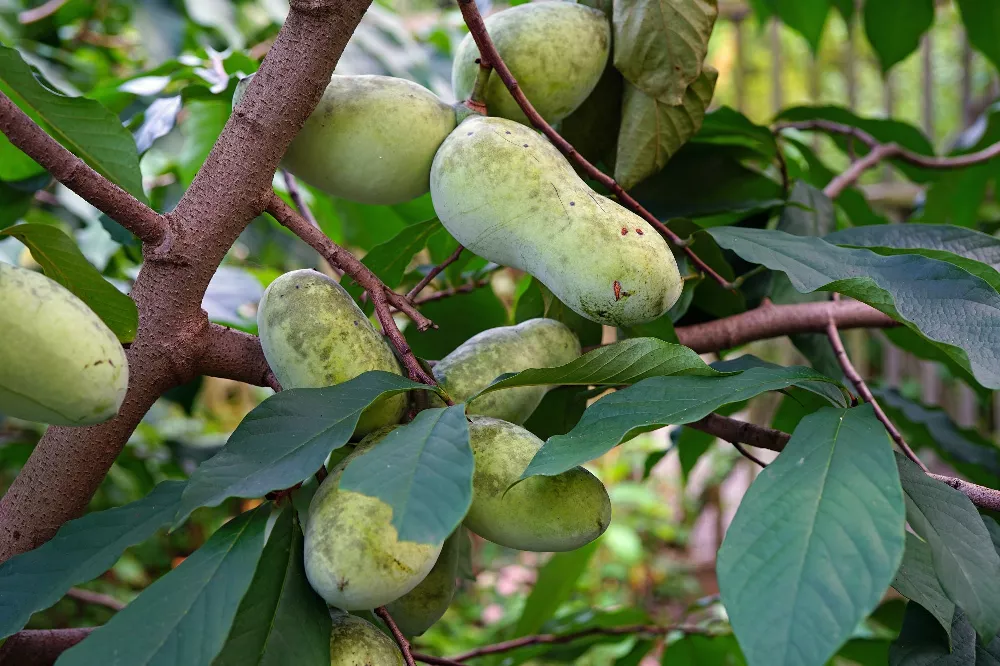Ylang Ylang Flowering Trees for Sale
The greatest feature of the ylang ylang flowering tree is the flowers themselves. This tropical species, known botanically as Cananga odorata, has blooms that last for a large portion of the year — and give off a pleasant fragrance too. The form of these flowers is also intriguing: Each petal is somewhat long and has a curving shape. While this plant can grow fast and reach a large size, they are also adaptable and will grow in containers for those who live outside of a tropical zone.
- The ylang ylang flowering tree offers long-lasting yellow blooms with curling petals.
- Its flowers provide both beauty and lovely fragrances.
- It can have a fast growth rate, but it will adapt to containers as well.
Enter your zip code to find nearby stores that may carry this plant.
Plant Care
Sunlight

The ylang ylang flowering tree grows best in full sunlight, but it can survive in partial shade as well. Provide a minimum of four hours of light.
Watering
Water only when the first few inches of soil have become entirely dry.
Fertilizing

Apply fertilizer once per month during the growing season. Use a mix that has lower nitrogen content.
Planting and Care
Planting instructions
If you want your ylang ylang flowering tree to show its best ornamental characteristics, you should prioritize planting locations that have full sun exposure and freely-draining soils. Full sun allows for better and more numerous blooms, while soil drainage prevents this plant from sitting in excessive moisture, which will cause it to decline. When growing this plant outdoors, give it plenty of room to grow into its mature size. For those in colder zones, plant your ylang ylang flowering tree in a large container so that you can overwinter it and protect it from freezing weather.
Watering and nutrients
Ylang ylang flowering trees require soil moisture but do not tolerate waterlogged soils. As such, you should decide your watering frequency by checking the soil rather than following a strict, pre-set schedule. Observe when the first layers of soil have become completely dry, then supply water. You should provide fertilizer about once every month during the active growing period. General-purpose fertilizers may work, but those lower in nitrogen are often better as they don’t encourage foliage development over flowering.
Pollination
Ylang ylang flowering trees usually begin blooming in the springtime, opening the opportunity for pollination. These flowers use their nectar supply and their attractive fragrance to invite some interesting pollinator species. In their native range, one of the most interesting pollinators is the nocturnal moth. In response, the ylang ylang flowering tree puts out its strongest fragrance between sunset and sunrise. During that period, the nocturnal moth is active and can conduct pollination for the plant, which leads to groups of black fruits.
Pruning
Pruning is an important practice for the ylang ylang flowering tree because this species can become unruly when left to its own devices. Fortunately, you can perform pruning at just about any time of year. When you prune, aim to remove any dead or diseased parts of the plant. You can also use your pruning cuts to thin the canopy, allowing for better air circulation and a more attractive overall growth habit. Pruning can also be an effective response to the arrival of pests and diseases.
Pests, diseases, and animals
Pest and disease issues are not frequent occurrences for ylang ylang flowering trees. However, it is possible for them to occur. When an infestation occurs, it is often the result of stem borers or other insects that attack the leaves, stems, or flowers of the plant. The more prevalent animal problem with this plant relates to its fruits. When the plant bears fruits, many birds may eat the fruits and disperse the seeds. This interaction can lead to the ylang ylang tree taking over more territory than you might wish.
Achieving maximum results
One of the most prized aspects of the ylang ylang flowering tree is its smell. These scents are very pleasing to both humans and pollinator species. If you want your ylang ylang flowering tree to have a stronger scent, you should ensure that the air humidity is somewhat high, similar to this tree’s natural growing range. But despite this love for humidity, the ylang ylang flowering tree remains intolerant of excessively moist soil conditions and slow drainage.
FAQs
Where does the ylang ylang flowering tree come from?
The ylang ylang flowering tree originates in the Pacific region, where you can find it thriving on several different and widespread islands. That natural range includes places such as Polynesia, Micronesia, and Madagascar. In those locations, the ylang ylang flowering tree lives in rainforests where the weather is consistently warm and humid. Since gaining ornamental recognition, this tree has spread to many countries, but it grows best where conditions are similar to that which you would find in its home range.
Is the ylang ylang flowering tree edible?
Although few people grow the ylang ylang flowering tree for its fruits, the fruits are edible and have a tart flavor. Some believe that these fruits also come with a wide range of health benefits. However, many of these claims remain anecdotal rather than relying on strict scientific evidence. The oil of this tree may also have some health benefits, including lowering blood pressure and helping relaxation.
Is the ylang ylang flowering tree low-maintenance?
In some respects, the ylang ylang flowering tree is low-maintenance. This plant does not need excessive amounts of supplemental water, and the ideal fertilization routine is easy to follow. However, the ylang ylang flowering tree can require a comparatively high amount of pruning. These trees can also be hard to control, as they disperse their seeds very easily when animals eat their fruits.
Compare Similar Products
You can't add more Product Name - Product size to the cart.
OK









